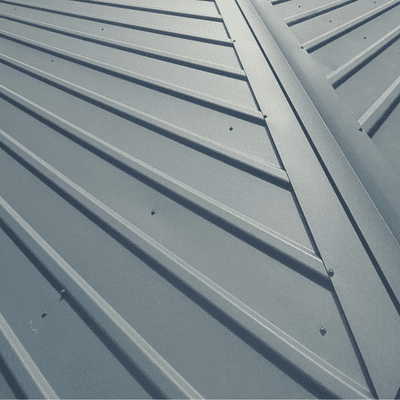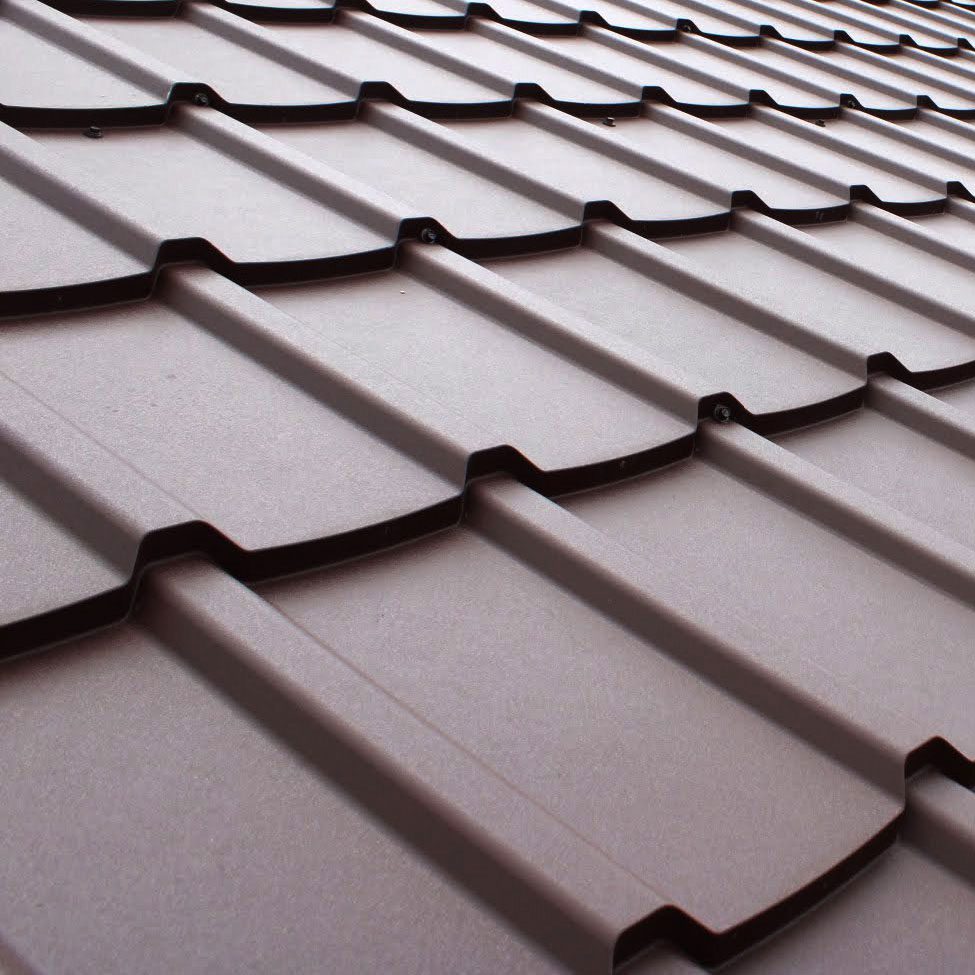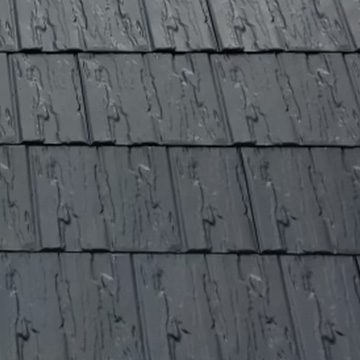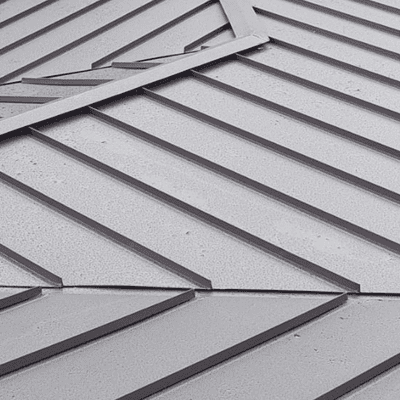Metal Roofing Calculator: Estimate Your Roofing Costs!
The roof on your property plays the vital role of protecting everything beneath it from the elements. Though you may not often think about it, if damaged, the roof is impossible to disregard. Servicing your roof can save you from significant losses that may be caused by leakages.
Replacing your roof is a major project and a significant expense. The Metal Roofing Cost Calculator will provide you with an estimate of your roofing costs.
Use the Metal Roofing Cost Calculator Above in 3 Simple Steps
Step 1: Input area of your house in feet
The roof cost calculator will estimate the area using the length and width of your house. The width is the distance between two corners on the short side of your house. The length is the distance between two corners on the long side of the house.
Step 2: Select the number of stories
How many floors does your house occupy? A one-story house has all rooms on ground level while a two-story house has rooms spread on two levels.
Step 3: Select the roof slope.
Does your roof have a low, medium or high slope? The slope is determined by the vertical rise for every horizontal foot the roof runs. A moderate slope has a vertical rise of 6 inches for every 12 inches horizontally. A steep slope rises 12 inches for every 12 horizontal inches.
The roofing calculator is useful in estimating your roofing costs. However, it excludes replacement of damaged roofing structures, quality of materials from various brands, and the effect of geographic location on cost. It also excludes permits or taxes required to replace roofing and any other roofing systems that may need replacement.
Factors That Affect Roofing Prices
The cost of your roof is determined by various factors.
Raw materials, processing costs, and designs of the roofing panels affect their pricing. Aluminum and Galvanized Steel are more common in residential roofing due to their top performance and affordability. Stainless steel, copper, and zinc, provide exceptional performance but are too expensive for most people.
Interlocking panels have a more comprehensive production process, have more structural features and require more room on a shipping truck, thus cost more than overlapping panels. Panels that interlock on four sides produce better quality finish and cost more.
Accessibility and physical location determine the required special licenses, permits and specialized equipment to fit in tight spaces. It will cost more to install a roof near power lines and tree branches.
Complex architectural roof designs are more time consuming than simple designs due to fitting and angles. Windows, valleys, skylights, dormers, and chimneys increase material and labor costs. A steep roof pitch may require additional equipment and more time to complete while taller houses are more expensive due to the danger associated with height.
A coating can radically transform the lifespan of your metal roof. Polyester based paints have a short lifespan and are the cheapest while Polyvinylidene Fluoride (PVDF) offers a remarkable lifespan, adhesion, and fade and chalk resistance.
The underlayment of your metal roof is a critical support framework against the elements. A new roof will require a water and ice shield which can cost up to 5 times higher than breathable synthetic membranes.
Additional Costs
Some additional factors may increase the costs of your roofing project.
To install your new metal roof, you will need to remove the old one. If the structural framework is damaged, it must be repaired before installing the new roof. The cost varies based on difficulty and location.
Your roof requires trusses or rafters for support. If they cannot support the weight of your new roof or are damaged, you will need extra money for either reinforcement or replacement.
Safety is paramount. If your roof has a remarkably steep pitch, the installers will take more precaution for their safety, which increases the time and steps to your project and ultimately the cost. Furthermore, to earn a Class A fire rating, an underlayment may be required for a steep pitch.
Roof Replacement vs Repair
An average roof lasts approximately 20 years before replacement becomes an option. When leaks first occur, the question is whether to repair or replace the roof. This must be done quickly to prevent extensive interior water damage.
If the leaks are simple and the roof is relatively new, a repair would be appropriate. If the leaks are widespread and the roof is more than 20 years old, a replacement may be a better option. Additionally, if you are selling your house, a new roof is a major attraction. You can use the metal roofing cost calculator to estimate the cost of replacement depending on the size of your home and the roof design.
Roof replacement is a complex and costly project and should be scheduled at your convenience. Generally, a replacement is necessary towards the end of the roofing material’s lifespan. However, it should not be put off until it becomes a safety hazard or a real emergency.
Pros of Metal Roofs
Metal roofs offer major benefits compared to other roofing alternatives.
Metal roofs are cheaper to install and can sometimes be installed over other existing roofing materials, thereby eliminating the cost of stripping off the old roof. The lightweight relieves pressure on your trusses or rafters and once installed, metal roofs require little to no maintenance.
Metal roofs are resistant to the elements. They provide the best protection from leaks caused by a build-up of ice and snow. This resistance makes them more energy efficient and can save you energy bills by as much as 15% in heating costs and up to 40% in cooling costs. Metal roofs are ideal in areas prone to floods, hurricanes, and earthquakes. Additionally, steel and copper are fire resistant.
Properly installed metal roofs are highly durable. They do not chip, crack, warp, split or rot and can withstand a direct impact from falling objects without any damage. Aluminum and steel can last more than 50 years while zinc and copper can last over 100 years. This can lower your insurance costs by up to 30%. Metal roofs come with a 30-50 year warranty from the manufacturer in addition to the roofing contractor’s warranty.
Metal roofs are the only truly green roof solutions. They consist of 30% – 60% recycled metal content, are 100% recyclable and no petroleum by-products. This eco-friendly solution qualifies you for tax credits.
Due to durability, energy efficiency and low maintenance, metal roofs provide the best return on investment in terms of recouped cost and property appreciation. This is reflected in the increased resale value of your property.
Aesthetically, metal roofs offer a wide variety of customized, premium or standard color options. They also come with a variety of styles that include stone-coated steel tiles, vertical metal panels, ribbed and corrugated metal panels, and interlocking metal shingles.
Myths of Metal Roofs
Here are a few common myths and the real truth about metal roofs.
Myth #1: Metal roofs are noisy
Today’s metal roofs contain a sound-deadening underlayment which makes your house quieter after installation.
Myth #2: Metal roofs dent underfoot
If well supported, the material should not buckle as you walk on it. However, moist conditions make it slippery and less walkable.
Myth #3: Metal rusts
Metal only rusts if exposed and has no galvanized coating or other protection. This protective coat is included in the estimates generated by the new roof cost calculator.
Myth #4: Metal roofs get hot
Any roofing material gets hot in the sun. Metal is usually coated with cooling colors to keep your home comfortable by reflecting solar heat.
Myth #5: Metal roofs are a lightning rod
Metal is not struck by lightning more often than other materials. However, metal is advantageous because it does not ignite even after a strike.
Myth #6: Metal roofing is heavy
Metal roofing is lighter than other roofing materials by 50% – 75%.
How Metal Roofs Save Money
Installing a metal roof may be a substantial initial investment. However, the savings are worthwhile especially if you plan on living in your home for a long period of time.
The savings include up to 40 percent on energy bills and insurance discounts of up to 30 percent. You will also spend less on maintenance and your roof can last up to four times longer than alternative materials. In case you resell, you can recoup up to 95 percent of your investment.
Return on Investment and Resale Value
If you plan to resell your house, roofing with quality metal makes it more attractive to buyers and provides the greatest return on your investment, compared to all other exterior and interior renovations. Most buyers prefer to have roofs fixed before completing the purchase.
This is crucial in regions that experience extreme weather conditions such as heavy rain, ice dams, snow, and hurricanes. In these regions, metal roofing is perceived to offer optimum protection. Once installed, metal is a lifetime material that maintains its value over time and you are guaranteed a high return of up to 95%.
Real estate specialists and architects agree that metal roofing can drive buyers’ interest and increase the total value of your house. Based on research, a house with a metal roof sells faster and at 2% – 5% more than an identical house without a metal roof.
Let Top Metal Roofs Transform Your House
Your metal roof must be installed by a metal roofing master. If wrongly installed, it might cost you substantial amounts of money in repairs and replacement. We have a wide pool of metal roofing specialists and a proven record with satisfied clients.
Our roofing experts will assess your project, and estimate your budget using the Metal Roofing Cost Calculator. Contact us and we will transform your house by giving it a quality, durable and aesthetically appealing roof.




